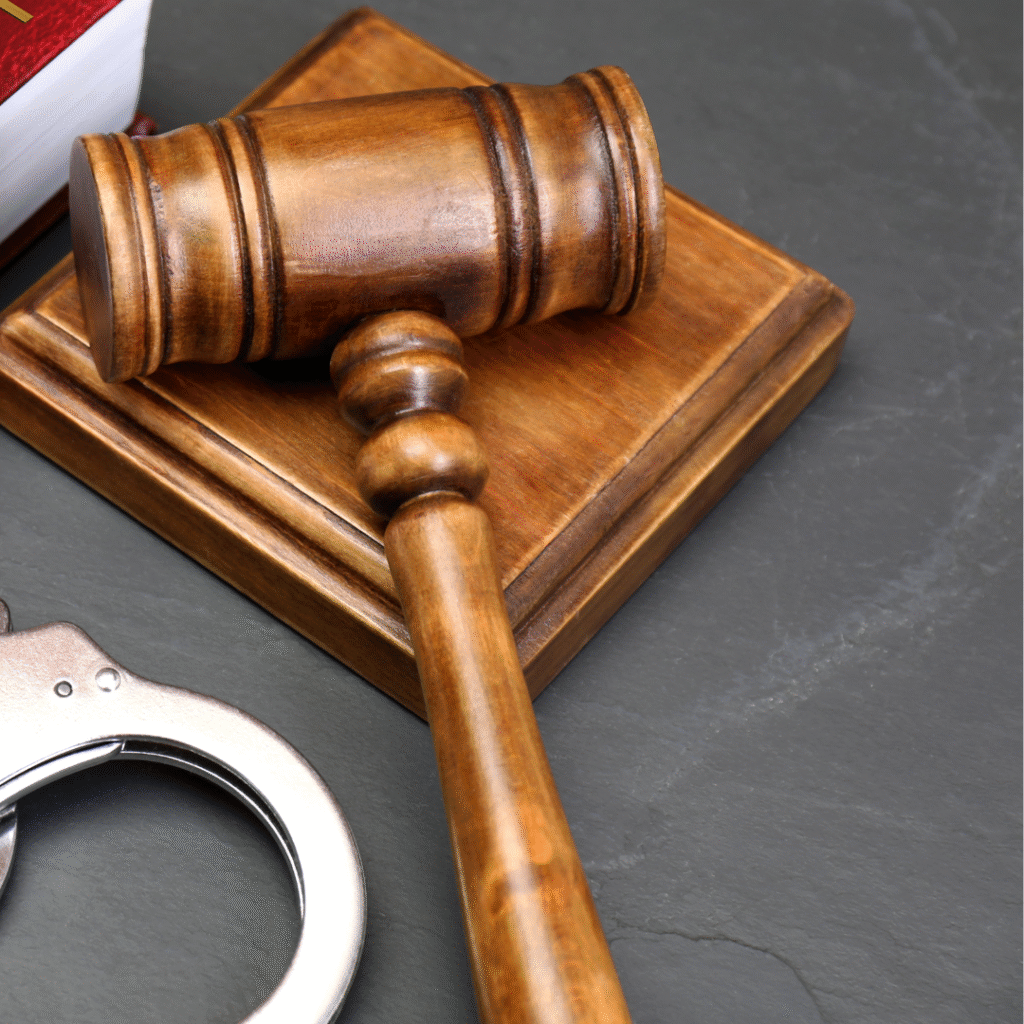Protected: UPCOMING NEWS 121025
There is no excerpt because this is a protected post.
$100M Adderall Distribution Fraud: Digital Health CEO and President Convicted

December 10, 2025 | JacobiJournal.com — In a high-profile case highlighting the dangers of unregulated telemedicine, two top executives of a California digital health company have been convicted in a $100 million Adderall distribution fraud scheme. Ruthia He, the company’s founder and CEO, along with David Brody, the clinical president, were found guilty of illegally distributing stimulants online and submitting fraudulent health care claims. Authorities say the scheme not only defrauded federal programs but also endangered patients by creating an unmonitored pipeline for controlled substances. How the Adderall Distribution Fraud Scheme Operated Federal prosecutors in San Francisco announced that Ruthia He, founder and CEO of Done, and David Brody, the company’s clinical president, were convicted for orchestrating a massive Adderall distribution fraud. The executives ran an online telehealth platform, misleading patients into subscribing for Adderall and other stimulant medications. Authorities reported that the defendants submitted fraudulent claims to health care programs while simultaneously targeting patients through social media advertising. Over the course of the scheme, Done distributed tens of millions of pills, generating profits while endangering public safety. He was also convicted of conspiring to obstruct justice. Why Telehealth Became a Vehicle for Fraud Investigators noted that telehealth platforms, while designed to increase access to care, can be exploited if proper oversight is absent. He and Brody allegedly took advantage of lax online prescription regulations, offering easy access to controlled substances without thorough medical evaluation. Officials warn that these practices undermine trust in digital health solutions and highlight the importance of strict telemedicine compliance. “Patient safety must never be compromised for profit,” emphasized Acting Assistant Attorney General Matthew D. Galeotti. What Officials Are Saying About the Case U.S. Attorney Craig H. Missakian stated that the convictions “underscore the ethical responsibility of medical professionals to prioritize patient wellbeing over financial gain.” DEA and HHS-OIG investigators added that this is one of the largest telehealth-related controlled substance fraud cases in recent history. The case also reflects the growing need for federal and state regulators to monitor online prescription practices, especially as digital health services continue to expand nationwide. How Patients and the Health Care System Were Impacted The Adderall distribution fraud carried out by the company had serious consequences for patients, including increased risks of addiction, misuse, and overdose. Health care programs were defrauded as the company submitted millions of dollars in false claims. Experts warn that this case serves as a cautionary tale for patients using online health services and for regulators working to protect public health. Read the full official DOJ press release here for detailed information. FAQs: $100M Adderall Fraud Case Who were convicted in the $100M Adderall distribution fraud case? Ruthia He, CEO of Done, and David Brody, the company’s clinical president, were convicted for illegal Adderall distribution and health care fraud. How did the company illegally distribute Adderall? The executives used an online telehealth platform and social media advertising to offer subscriptions for Adderall, bypassing proper medical evaluation. Which government agencies investigated the case? DOJ, DEA, HHS-OIG, IRS Criminal Investigation, and the Northern District of California U.S. Attorney’s Office led the investigation. What were the consequences of the Adderall distribution fraud for patients and the health care system? The Adderall distribution fraud exposed patients to risks of addiction, misuse, and overdose, while health care programs were defrauded of millions of dollars through false claims. This case highlights the need for stronger oversight of telehealth services and controlled substance prescriptions. Protect yourself and your community from online prescription scams. Subscribe to JacobiJournal.com for the latest updates on health care fraud, regulatory oversight, and digital health news. 🔎 Read More from JacobiJournal.com:
Protected: COMING SOON 121025
There is no excerpt because this is a protected post.
California Casualty Companies Faces Data Breach Investigation

December 5, 2025 | JacobiJournal.com — California Casualty Companies has confirmed that unauthorized access to its systems may have exposed customer information causing a data breach. The security incident has prompted Levi & Korsinsky LLP, a national litigation firm, to launch an investigation to determine whether the company failed to safeguard sensitive data properly. The breach highlights ongoing concerns about cybersecurity in the insurance industry and the risks posed to personal information. Why This Breach Matters Insurance companies handle a wide range of sensitive information, from policyholder names and addresses to Social Security numbers and financial details. When this data is compromised: Levi & Korsinsky LLP’s investigation could lead to class-action claims if negligence is identified, putting additional scrutiny on California Casualty’s security practices. How the Investigation Works The law firm will review available evidence, company disclosures, and regulatory filings to evaluate potential violations of data protection standards. This step may result in formal legal proceedings, notifications to affected customers, or guidance on how clients can monitor their accounts. For consumers, the investigation signals a need for vigilance while the company works to contain the breach and secure its systems. Steps Policyholders Should Take If you hold a policy with California Casualty Companies, experts recommend: Taking these steps can reduce the risk of identity theft and provide early warning of fraudulent activity. How This Impacts Fraud Risk Exposed personal data can fuel scams, identity theft, and fraudulent insurance claims. Incidents like this reinforce the importance of cybersecurity for financial and insurance firms, as well as proactive monitoring by consumers to prevent losses. For more information about the investigation, click here MarketWatch Press Release. FAQs: California Casualty Companies Data Breach What information could have been exposed in the data breach? The data breach may involve policyholder names, contact details, Social Security numbers, and financial information, though the full scope is still under review. How can I find out if I am affected by this breach? Customers should monitor official communications from California Casualty Companies and contact the company directly if no notice is received. Why is Levi & Korsinsky LLP involved in the investigation? The firm specializes in securities and data breach litigation. Its involvement suggests potential legal claims and scrutiny over the company’s data protection measures. What protective measures should consumers take now? Review account activity, set up fraud alerts or credit freezes if necessary, and remain alert to phishing or scam attempts targeting exposed data. Stay informed and subscribe to JacobiJournal.com for real-time coverage on data breaches, fraud, and insurance investigations. 🔎 Read More from JacobiJournal.com:
New Hampshire Man Indicted for $700,000 California Unemployment Fraud

November 24, 2025 | JacobiJournal.com – A federal grand jury has returned a 10-count indictment against Anthony Mark Silva, 40, from Manchester, New Hampshire, for a massive California unemployment fraud scheme. Silva faces nine counts of bank fraud and one count of aggravated identity theft, related to false claims filed with the California Employment Development Department (EDD). How Silva Orchestrated the Fraud Between July 2020 and June 2021, Silva allegedly collected personally identifiable information—including names, birth dates, and Social Security numbers—to submit fraudulent unemployment claims. These claims targeted Pandemic Unemployment Assistance and other CARES Act benefits. Many “claimants” were not unemployed or eligible for California unemployment benefits, and Silva did not have authorization to file on their behalf. What the Scheme Cost Taxpayers EDD approved dozens of Silva’s fraudulent claims and authorized Bank of America to issue debit cards loaded with unemployment benefits. Silva reportedly activated these debit cards and spent the funds personally, resulting in actual losses exceeding $700,000. Why Authorities Are Taking Action This case was investigated by the U.S. Department of Labor Office of Inspector General and EDD’s Investigation Division. Prosecutors warn that COVID-19 relief programs remain a target for fraud, highlighting the need for robust identity verification and oversight. Silva faces a statutory maximum of 30 years in prison for the bank fraud counts and a mandatory two-year consecutive sentence for aggravated identity theft if convicted. Ensuring Stronger Safeguards in Unemployment Benefits Federal authorities continue to tighten fraud detection measures, particularly for programs like Pandemic Unemployment Assistance. The indictment serves as a reminder that unemployment benefits, while vital for Californians, are vulnerable to organized schemes. For more details on the case, visit the official U.S. Department of Justice press release here. FAQs: California Unemployment Fraud Who is charged in this California unemployment fraud case? Anthony Mark Silva, 40, of Manchester, New Hampshire, was indicted for nine counts of bank fraud or unemployment fraud and one count of aggravated identity theft. How much money was stolen in the scheme? Authorities report that Silva’s fraudulent claims caused losses exceeding $700,000. Which benefits were targeted in the unemployment fraud? Pandemic Unemployment Assistance and other CARES Act-related unemployment benefits. What penalties could Silva face if convicted? He faces up to 30 years in prison for bank fraud counts and an additional two-year mandatory sentence for aggravated identity theft, plus fines up to $1 million per count. Stay ahead of fraud schemes—subscribe to JacobiJournal.com for real-time investigative updates. 🔎 Read More from JacobiJournal.com:
Protected: UPCOMING NEWS

There is no excerpt because this is a protected post.
Investigative News Report: Insurance Execs Convicted in $233M ACA Enrollment Fraud

November 19, 2025 | JacobiJournal.com — Federal prosecutors secured a major victory this week as a jury convicted two executives behind one of the largest Affordable Care Act (ACA) enrollment fraud operations uncovered to date. Cory Lloyd, 46, president of an insurance brokerage firm, and Steven Strong, 42, CEO of a marketing company, were found guilty of orchestrating a sweeping plan that generated millions in illegal commissions by manipulating ACA enrollment rules. According to trial evidence, the scheme attempted to extract over $233 million in federal subsidies, with insurers receiving at least $180 million in fraudulent premium payments tied to the operation. How the $233M ACA Scheme Operated Investigators testified that the defendants engineered a system that exploited federal premium tax credits—payments designed to help low-income Americans afford monthly ACA coverage. Lloyd and Strong built a marketing and enrollment pipeline that mass-submitted fraudulent applications, each one generating commission checks from participating insurers. Why Vulnerable Individuals Became Targets The operation relied heavily on exploiting individuals experiencing homelessness, unemployment, or mental health and substance-use challenges. “Street marketers” working under the defendants lured individuals with bribes, gift cards, and promises of “free health insurance.” Victims were coached to falsify income information to appear eligible for tax credits. In many cases, applications included fabricated Social Security numbers, false addresses, and scripted responses crafted to avoid detection by federal verification systems. As a result, many victims unknowingly lost legitimate Medicaid coverage or saw disruptions to their medical care—an impact prosecutors described as “devastating collateral damage.” How the Defendants Manipulated Enrollment Rules A key component of the conspiracy involved intentionally triggering Medicaid denials. By ensuring applications were submitted with information that guaranteed rejection, Lloyd and Strong could then enroll the same individuals into ACA plans outside the standard open enrollment period. This loophole allowed the pair to generate continuous commission income month after month, well beyond the usual annual window. How the Profits Were Spent Trial testimony showed that the executives spent their illicit proceeds on: Federal agents testified that each fraudulent enrollment directly increased the defendants’ commission income, creating what investigators called an “industrialized fraud structure.” What Led to the Convictions The jury found Lloyd and Strong guilty of: Each wire fraud count carries a potential 20-year sentence, and Strong faces an additional 10 years per money-laundering charge. Sentencing is scheduled for February 4, 2026, where a federal judge will determine penalties based on the U.S. Sentencing Guidelines. This case was jointly investigated by the FBI, Department of Health and Human Services-OIG, and IRS-Criminal Investigation. For additional background on federal health care fraud enforcement efforts, see the U.S. Department of Justice’s official news releases. FAQ: Understanding the $233M ACA Fraud Scheme How did the ACA fraud scheme generate such large commission payouts? The defendants received insurer commissions for every ACA policy issued, meaning each fraudulent application produced recurring monthly payments. Why were homeless and low-income individuals targeted in this case? Prosecutors say these individuals were more vulnerable to coercion and less likely to track or understand unauthorized enrollments made in their names. What are the penalties for ACA subsidy fraud at the federal level? ACA fraud can result in charges of wire fraud, conspiracy, identity theft, and money laundering—each carrying multi-year federal prison sentences. How can consumers identify unauthorized ACA enrollment activity? Individuals can check their HealthCare.gov account or contact their state marketplace to confirm active plans and report suspicious activity. Stay informed. Subscribe to JacobiJournal.com for ongoing investigations, fraud analyses, and breaking legal news. 🔎 Read More from JacobiJournal.com:
$51M Judgment in Fraud Scheme Targeting Older Adults

November 14, 2025 | JacobiJournal.com — Investment fraud targeting seniors has led to a nearly $51 million judgment against Safeguard Metals LLC and its owner, Jeffrey Ikahn, after authorities determined they operated a fraudulent scheme targeting older and retirement-aged investors. The scheme involved deceptive sales practices for precious metals, causing substantial financial losses for victims and raising questions about regulatory oversight in investments marketed to seniors. How the Fraud Occurred Investigators found that Safeguard Metals engaged in investment fraud by misrepresenting the value, liquidity, and investment potential of gold and other precious metals to older adults. High-pressure sales tactics and misleading documentation encouraged seniors to invest large sums under false pretenses, while the company failed to provide accurate disclosures or timely account statements. What the Implications Are This case highlights the financial vulnerabilities of older investors and the risks posed by investment fraud and other predatory investment schemes. Regulatory bodies, including the Iowa Insurance Division, emphasize the importance of: For insurers and retirement plan administrators, the case serves as a reminder that investment fraud in alternative investments can create indirect exposure for fiduciaries and financial service providers. Why It Matters Elder financial fraud not only causes significant monetary loss but can also undermine trust in financial systems. The Safeguard Metals judgment underscores the need for rigorous compliance, consumer protection measures, and proactive monitoring of high-risk investment products. Advisors and plan sponsors are urged to educate clients and beneficiaries about potential scams targeting older adults. Understanding the patterns and warning signs of investment fraud is crucial for both investors and those who serve them. Seniors and retirement-aged individuals are often targeted due to limited familiarity with complex financial products, making them especially vulnerable to misleading claims and high-pressure sales tactics. Educating clients about typical red flags—such as promises of unusually high returns, lack of transparency in fees, or pressure to invest quickly—can prevent substantial losses. Furthermore, staying informed about recent enforcement actions, like the Safeguard Metals case, can help stakeholders anticipate emerging fraud schemes and adjust their risk management strategies accordingly. Encouraging open communication between advisors and clients about suspicious offers strengthens protection and empowers older investors to make safer financial decisions. Furthermore, staying informed about recent enforcement actions, like the Safeguard Metals case, can help stakeholders anticipate emerging fraud schemes and adjust their risk management strategies accordingly. Encouraging open communication between advisors and clients about suspicious offers strengthens protection and empowers older investors to make safer financial decisions. Ultimately, combating investment fraud requires a combination of awareness, education, and proactive oversight. By prioritizing these measures, financial professionals and seniors alike can reduce the likelihood of losses, maintain confidence in the financial system, and support a more secure retirement environment. Learn more — For official details, see the Iowa Insurance Division announcement. FAQs: Investment Fraud Targeting Seniors What is Safeguard Metals LLC accused of? Operating a scheme that misled older investors about precious metal investments, resulting in substantial financial losses. How much money was involved in the judgment? The court ordered nearly $51 million in restitution and civil penalties for victims and enforcement purposes. Why are precious metal schemes risky for retirees? They often involve complex valuations, low liquidity, and deceptive marketing, making them high-risk for retirement-aged investors. What steps can seniors take to protect themselves from fraud? Conduct due diligence, verify credentials of sellers, seek guidance from licensed financial advisors, and report suspicious offers to state regulators. How can regulators prevent fraud targeting older adults? By enforcing strict disclosure rules, auditing investment firms, monitoring marketing practices, and educating the public on common scams. Stay informed — subscribe to JacobiJournal.com for investigative coverage on financial fraud, insurance compliance, and consumer protection. 🔎 Read More from JacobiJournal.com:
Insurer Cannot Escape Massage Therapist’s Coverage Obligations, Court Rules

November 3, 2025 | JacobiJournal.com — A recent court decision has reaffirmed that insurer coverage obligations cannot be ignored or withdrawn simply because a carrier abandons a related legal pursuit.The ruling involved a massage therapist who sought defense and indemnity under her professional-liability policy after being accused of misconduct during a client session. Court Says Contract Obligations Remain Intact The insurer argued that because it had discontinued a subrogation claim connected to the incident, it was no longer obligated to cover the therapist’s defense or potential settlement costs. The court rejected that argument, underscoring the insurer coverage obligations that remain once a claim is triggered. In its written opinion, the judge emphasized that contractual coverage cannot “evaporate at the convenience of the insurer.” Once a policyholder has reported a covered event and met the terms of notice and cooperation, the insurer’s duty to evaluate and respond remains enforceable until formally resolved under the policy. Case Highlights Key Lessons for Professional Liability Policies This decision offers a timely reminder that insurer coverage obligations extend beyond litigation strategy, reinforcing the permanence of professional-liability protection for practitioners. For small business owners and independent professionals—such as massage therapists, chiropractors, and wellness practitioners—the judgment reinforces that coverage protections endure unless specifically terminated in writing and consistent with state insurance law. Legal analysts note that the ruling may deter insurers from using procedural maneuvers to avoid paying legitimate claims, especially when policyholders depend on professional-liability coverage to stay in business. Industry Implications Experts say the decision will likely influence how carriers interpret insurer coverage obligations in future cases involving wellness and healthcare professionals. “The court is sending a clear message—once a risk is underwritten, you can’t selectively abandon coverage because litigation strategy changes,” said an insurance law consultant following the case. The case could also prompt insurers to tighten subrogation clauses or modify language around continuing obligations after legal actions are dropped. Broader Legal Context Across the U.S., courts have increasingly emphasized insurer accountability in professional-liability disputes. This mirrors recent trends in healthcare, beauty, and wellness sectors, where practitioners often rely on hybrid business-owner and malpractice policies that contain overlapping clauses. Policyholders are advised to keep written documentation of all communications with insurers and ensure that coverage denials are backed by explicit contractual authority. For more background on how professional-liability coverage operates, visit the National Association of Insurance Commissioners (NAIC). FAQs: About Massage Therapist Insurance Coverage Why was the insurer denying coverage? The company argued that its withdrawal from a subrogation claim ended its duty to cover the massage therapist’s defense costs. The court disagreed, citing the ongoing contractual obligation under the policy. What did the court ultimately decide? The judge ruled that coverage obligations cannot be undone simply because an insurer abandons a related lawsuit. The insurer must still honor its policy duties. What does this ruling mean for insurer coverage obligations? It clarifies that insurer coverage obligations persist even when a related subrogation or legal action is dropped, protecting policyholders under active liability coverage. Could insurers appeal or change their policies after this decision? Yes. While appeals are possible, insurers may instead revise policy wording to clarify post-litigation terms related to insurer coverage obligations and reduce ambiguity in future claims. Subscribe to JacobiJournal.com for the latest coverage of insurance rulings, healthcare liability cases, and professional-risk litigation shaping state and federal precedent. 🔎 Read More from JacobiJournal.com:
Reality TV Star Steven McBee Sr. Sentenced to 24 Months in Prison for $3.15M Crop Insurance Fraud

October 27, 2025 | JacobiJournal.com — Steven McBee Sr., known from Bravo’s McBee Dynasty: Real American Cowboys, has been sentenced to 24 months in federal prison after being convicted of a multimillion-dollar crop insurance fraud scheme. The U.S. District Court in Kansas City, Missouri, also ordered McBee to pay $4,022,124 in restitution to the federal government. Fraudulent Claims Exposed Between 2018 and 2020, Steven McBee submitted falsified reports to Rain and Hail Insurance, underreporting his corn and soybean yields. These manipulations led to over $3.15 million in improper federal crop insurance payments. The scheme represents a significant abuse of federal agricultural programs and underscores the need for rigorous oversight. From Reality Star to Convicted Fraudster Once celebrated for showcasing his family’s ranching operations on national television, McBee’s fall highlights how high-profile figures can exploit agricultural programs. This case also brings attention to the broader risks of fraud within federally-backed insurance systems. Industry Takeaways Agricultural insurance experts stress that this conviction illustrates the necessity for more robust auditing and verification measures. McBee’s case could serve as a precedent for stricter enforcement and increased penalties for fraudulent claims in crop insurance. For more details on the case, see the People.com report. FAQs: Steven McBee Crop Insurance Fraud What did Steven McBee Sr. do to commit fraud? He underreported his corn and soybean yields to obtain more than $3.15 million in federal crop insurance payments. What penalties did he receive? McBee was sentenced to 24 months in federal prison and must pay $4,022,124 in restitution. Why is this case significant? It highlights potential vulnerabilities in federally-backed crop insurance programs and emphasizes the importance of rigorous oversight. How does this affect the agricultural industry? The case signals a warning to farmers and insurers about the consequences of falsifying records and may lead to stricter auditing procedures. Subscribe to JacobiJournal.com for timely updates on insurance fraud, regulatory enforcement, and investigative reporting. 🔎 Read More from JacobiJournal.com: